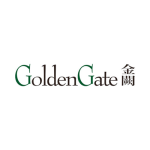In order to implement the punitive damages system in an uniform and efficient fashion, China’s Supreme Court has released the ‘Judicial interpretation on application of punitive damages in the trial of civil intellectual property infringement cases (关于审理侵害知识产权民事案件适用惩罚性赔偿的解释)(the interpretation),which became effective on March 3 2021.
To correspond to China’s Civil Code which took effect as of January 1 2021, the interpretation aims to provide specific guidance on the application of punitive damages. Article 1 of the interpretation stipulates that the courts should review and deal with the plaintiff’s claim for punitive damages where the defendant intentionally infringes upon IP rights and the circumstances are serious.
To clarify the terms of the ‘intention’ and ‘serious circumstance’, the interpretation specifies factors the courts should take into consideration. To assess the intention, a court shall comprehensively consider the type and status of the infringed intellectual property, the popularity of the relevant products, and the relationship between the defendant and the plaintiff or interested parties. To determinate the existence of the serious circumstances, a court should comprehensively consider the means and frequency of infringement, the duration, geographical scope, scale and consequences of the infringement, along with the behaviour of the infringer during the proceedings.
Specifically, the interpretation lists the following circumstances where a court may preliminarily determine that the defendant has the intention of infringement:
Where the defendant continues to commit infringement after being notified or warned by the plaintiff or the interested parties;
Where the defendant or its legal representative or its manager is the legal representative, manager or actual controller of the plaintiff or interested parties;
Where there are relationships between the defendant and the plaintiff or interested parties with regard to employment, provision of service, cooperation, license, distribution, agency, etc, through which the defendant has got access to the infringed IP;
Where the defendant and the plaintiff or the interested parties have business dealings or have conducted negotiations for the conclusion of a contract, and the defendant has got access to the infringed IP; and
Where the defendant has pirated and counterfeited the registered trademarks.
The interpretation also lists certain serious circumstances as follows:
After being imposed an administrative penalty or being held liable by a court judgment for infringement, the infringer repeatedly committed the same or similar infringement;
The infringer engaged in infringement as its business;
The infringer forged or destroyed or concealed the infringement evidence;
The infringer refused to obey the action preservation order;
The benefits gained from the infringement or losses suffered by the right holder are huge; and
The infringement may simultaneously endanger national security, public interest or personal health.
Under current laws, punitive damages fall within a range of one to five times the calculation base. Pursuant to Article 5 of the interpretation, subject to the relevant specific IP laws, the right holder’s actual loss or the infringing party’s illegal gains can be used as the basis for calculation of punitive damages. If neither of them can be verified, a court may refer to license fees. Meanwhile, the calculation base shall not cover the expenses incurred by the plaintiff for the purpose of stopping the infringement unless otherwise stipulated in the relevant laws. To determine the multiple of punitive damages, the court should comprehensively consider the degree of the defendant's subjective fault, the seriousness of the infringement and other factors.
Finally, it is worth noting that a claim for punitive damages shall be raised prior to the end of the court debates in the first instance. If a claim for punitive damages is raised in the second instance, the court of the second instance may conduct mediation according to the parties’ voluntariness. If the mediation fails, the parties concerned shall be requested to sue separately.
Following release of the interpretation, the China Supreme Court published six typical IP infringement cases involving the application of punitive damages to demonstrate how the relevant rules should be applied. In Guangzhou Tianci Company v Anhui Newman Company ((2019) ZuiGaoFa Zhi Min Zhong No. 562), the first IP-related punitive damages case adjudged by the China Supreme Court, in light of the following factors, China’s Supreme Court awarded the ceiling five times punitive damages:
(1) Not producing other products except infringing products, the defendant had engaged in infringement as its business;
(2) The defendant continued the production and sales of its infringing products during the criminal trial of its former legal representative, and even after the first instance court ordered the defendant to stop the its infringement;
(3) The infringing products had been exported to more than 20 countries and regions, with sales of more than RMB 37 million (approximately $5.75 million); and
(4) In the first instance trial stage, disobeying the court’s demand, the defendant refused to provide the relevant accounting books and original documents without justified reasons.
It is anticipated that the interpretation will encourage IP right owners to increasingly use punitive damages to deter severe IP infringements, and ultimately enhance IP protections.
Linda ZhaoPartner, GoldenGate LawyersE: lzhao@goldengatelawyers.com












